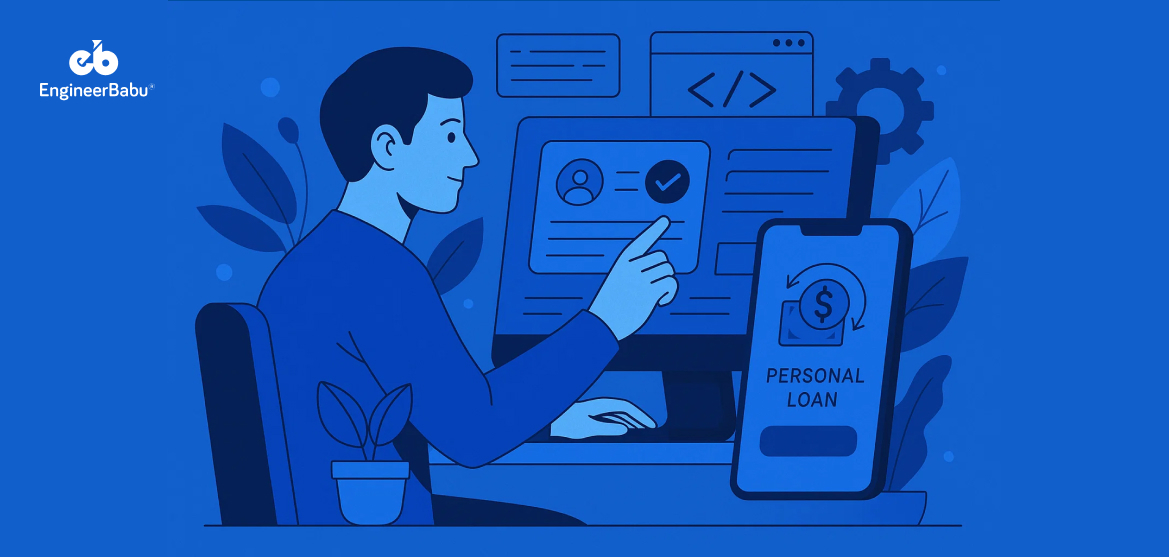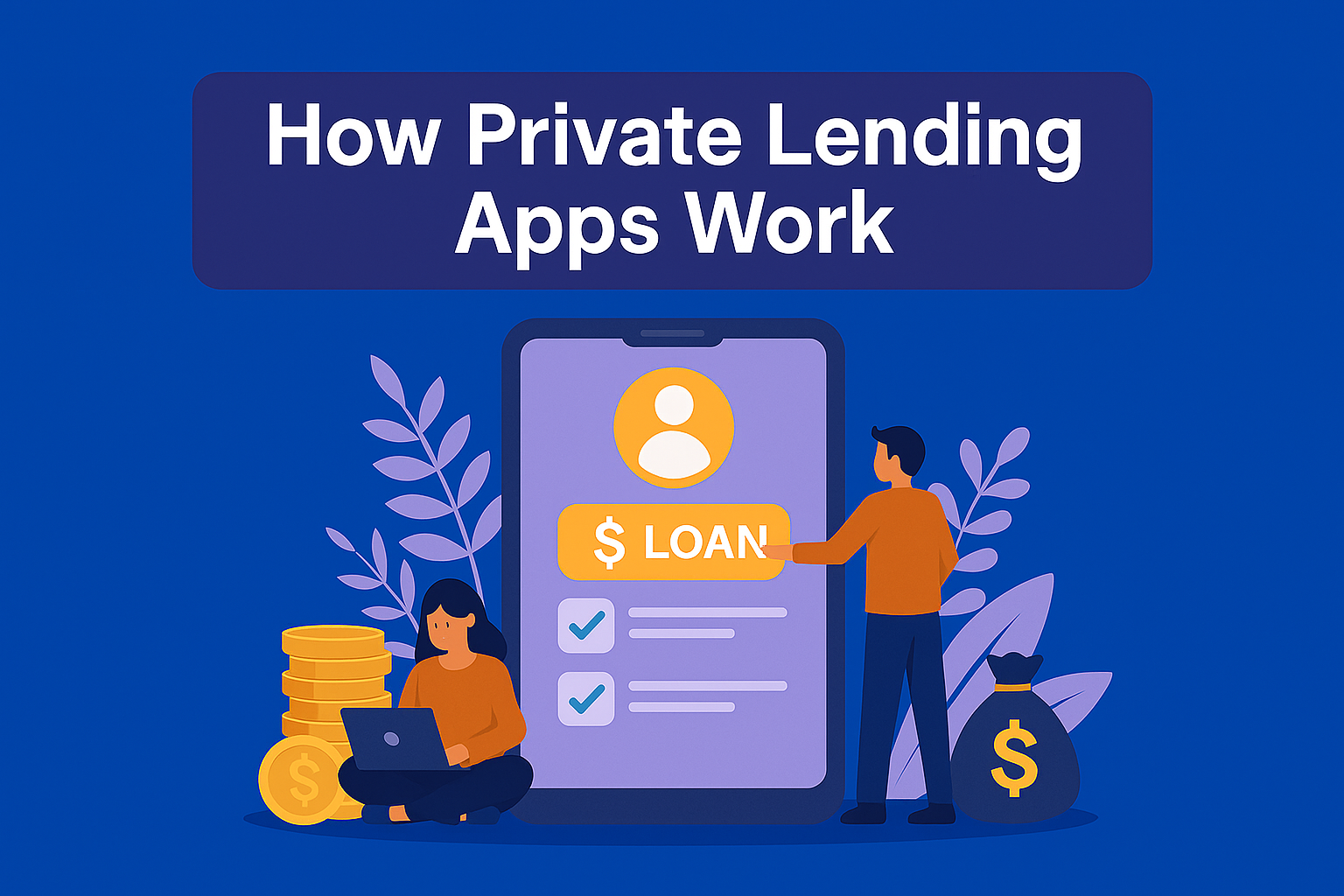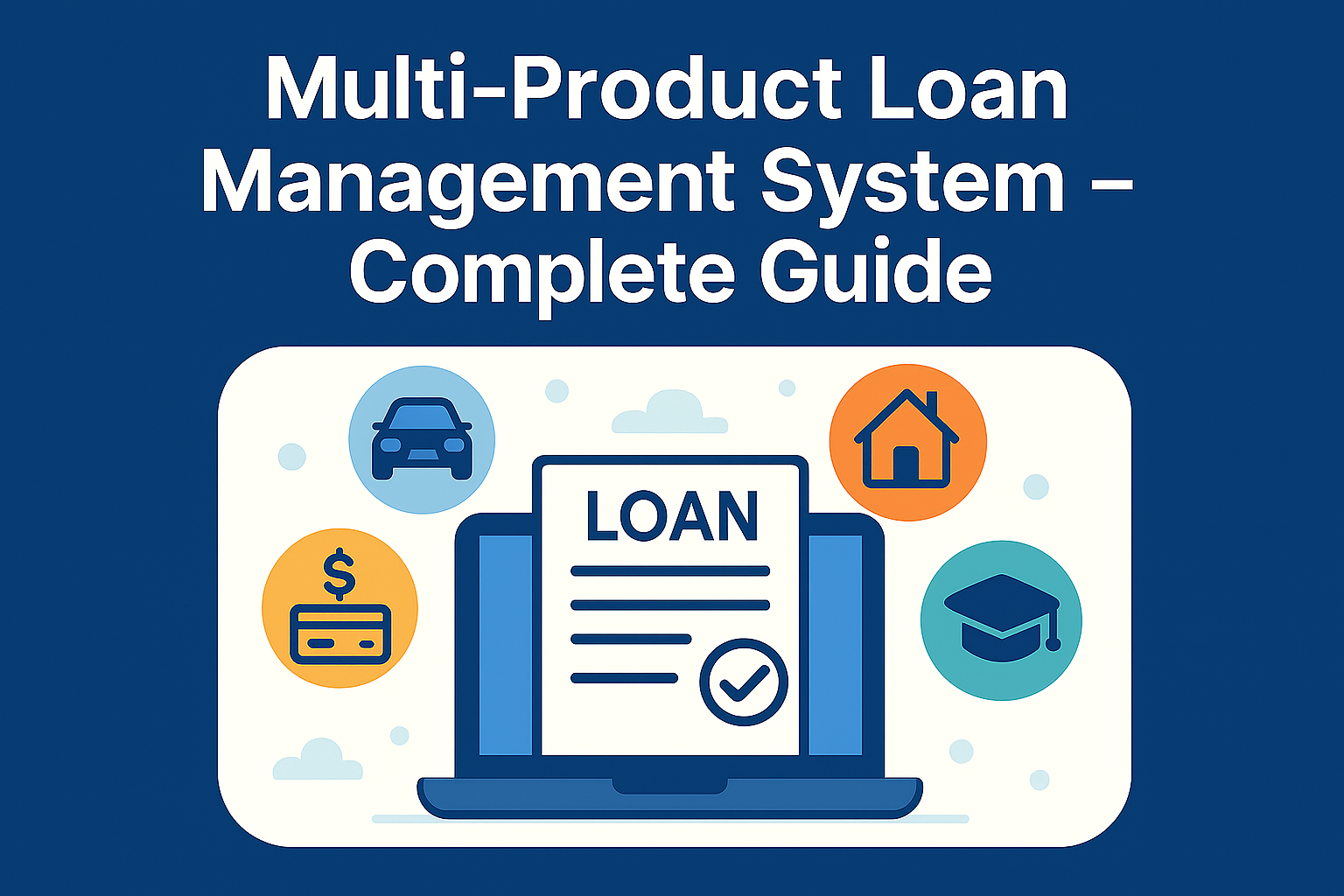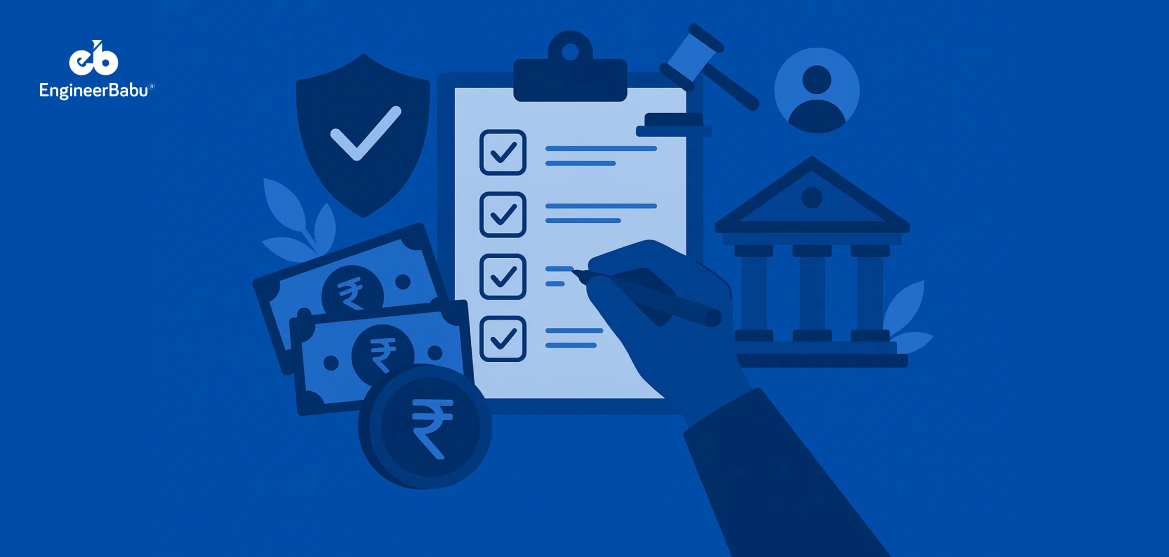If you have ever applied for a personal loan at a traditional bank, you know how time-consuming the process can be. Multiple visits, paperwork, and long approval cycles often discourage borrowers.
That gap is exactly what personal loan apps are solving. With just a few taps, users can check eligibility, apply for credit, and receive funds directly in their bank accounts.
The shift toward digital lending is not a small trend. According to a report by Grand View Research, the global digital lending market is projected to reach $44.49 billion by 2029. This surge is fueled by the demand for faster credit access and the convenience of mobile-first solutions.
For businesses, the opportunity is clear: building a personal loan app allows you to meet customer expectations and tap into a growing fintech market. Therefore, in this guide, we’ll walk through how to build a personal loan app from scratch, covering the must-have features, steps, and costs involved.
Why Invest in a Personal Loan App?
Personal loan apps are no longer just a convenience, they are quickly becoming the default way people seek credit. If you are considering entering this space, it helps to understand why the investment makes sense both for users and for businesses.
Growing Market Potential
The lending industry is undergoing a digital-first transformation. In India alone, digital lending is expected to touch $350 billion by 2025 end. Similar growth is visible worldwide as more users rely on smartphones for financial transactions. This trend is driven by younger generations who prefer mobile apps over visiting physical branches. For businesses, this means a large, expanding user base ready to adopt app-based loan solutions.
Faster Approvals and Disbursements
Traditional loan approvals often involve long forms, manual verifications, and waiting periods. A personal loan app streamlines this with automated KYC, instant credit checks, and direct bank transfers. Customers get quick access to funds, while businesses save time and resources by reducing dependency on manual processing.
Lower Operational Costs
Running a lending business through an app significantly reduces overhead. Instead of maintaining multiple branches and large administrative teams, much of the process can be automated. This creates space for lower interest rates or service fees, which in turn attracts more customers.
Building Trust Through Transparency
One of the biggest frustrations with traditional lending is hidden charges and unclear repayment terms. A well-designed loan app can address this directly by showing interest rates, EMI schedules, and repayment options upfront. This transparency builds trust and encourages repeat users.
Expanding Customer Reach
An app gives lenders the ability to serve users in remote or underserved regions where banks may not have a presence. By combining mobile accessibility with simplified onboarding, businesses can reach thousands of potential borrowers who were previously excluded from formal credit systems.
Data-Driven Insights
Every interaction on a loan app generates data. With the right analytics in place, lenders can identify borrowing patterns, assess repayment behavior, and refine risk models. These insights help in making smarter lending decisions and tailoring products for specific customer segments.
Key Features of a Personal Loan App
The success of a personal loan app depends on how well it balances user convenience, security, and compliance. Features of a loan lending app should make borrowing simpler while ensuring lenders can manage risk effectively. Below are the core features every personal loan app needs, along with why they matter.
1. User Registration and Profile Setup
The first step for any user is creating an account. This is where KYC (Know Your Customer) verification comes in. The app should allow users to upload ID documents, link their bank accounts, and verify mobile numbers or emails. Integrating loan app APIs from trusted providers speeds up this process and reduces the chances of fraud. A smooth onboarding flow sets the tone for the entire customer experience.
2. Loan Application Form
A simple, mobile-friendly loan application form is essential. Borrowers should be able to enter the loan amount, purpose, and tenure without wading through multiple confusing steps. Autofill options, document upload features, and digital signatures can make the process fast and seamless.
3. Credit Scoring and Eligibility Check
This is the heart of a loan app. Instead of relying only on traditional credit bureau scores, modern apps often combine multiple data points such as income patterns, employment history, and spending behavior. By integrating with credit bureau APIs or using AI-driven scoring models, lenders can quickly assess eligibility and offer loans that match the borrower’s risk profile.
4. Loan Calculator and EMI Estimator
Users need clarity before committing. A built-in loan calculator helps them see interest rates, monthly EMIs, and total repayment amounts. This not only improves transparency but also builds trust by avoiding surprises later. A real-time EMI estimator lets customers adjust tenure or amount until they find a repayment plan that works.
5. Secure Payment Gateway
Repayment is a crucial part of the loan lifecycle. The app should support multiple repayment methods such as UPI, net banking, debit cards, and digital wallets. A PCI-DSS compliant payment gateway ensures transactions are secure and reduces the risk of fraud.
6. Customer Support Options
Borrowers may have questions about interest rates, repayment schedules, or technical issues. Offering multiple support options like live chat, chatbots, or a helpline improves trust and reduces churn. A well-trained support system shows that the business cares about long-term customer relationships.
7. Data Security and Compliance
Given the sensitive nature of financial data, security cannot be optional. The app must use encryption for data storage and transmission. Compliance with local regulations such as RBI guidelines in India, GDPR in Europe, or CCPA in California is mandatory. Features like two-factor authentication and biometric login add extra layers of safety.
Step-by-Step Process: How to Build a Personal Loan App
Still wondering how to build a personal loan app? It involves research, compliance, backend systems, user experience, and ongoing monitoring. Below is a breakdown of the process in depth.
1. Market Research and Compliance
Before writing a single line of code, start with research. Identify your target audience: are you building for salaried employees, self-employed professionals, or underserved rural borrowers? Each group has different needs, repayment behaviors, and risk factors.
At the same time, study the regulatory framework. In India, for example, the Reserve Bank of India has specific guidelines around digital lending, KYC, and data privacy. Ignoring compliance early on can lead to delays or even shutdowns later. Partnering with legal advisors or consultants during this stage can save costly revisions.
2. Define Features and Business Model
Decide what type of lending your app will support. Will it be short-term instant loans, a gold loan app with personal loan features, or a p2p lending platform? Clarify how you will generate revenue, through interest rates, processing fees, or partnerships with financial institutions.
Once the business model is in place, prioritize features. For an MVP (minimum viable product), you might only include registration, loan application, credit scoring, and repayment. Advanced features like AI-driven scoring or chatbots can come later.
3. Create Wireframes and UI/UX Design
The app’s design directly affects adoption. Complex loan processes often intimidate users, so simplicity is key. Create wireframes that map the user journey from registration to repayment. Keep forms short, use clear language, and provide progress indicators.
You can also take help from dedicated UI/UX designers. A user-friendly design not only improves experience but also reduces drop-offs during the loan application process.
4. Backend Development
This is where the real engine of your app lives. The backend must handle loan requests, run eligibility checks, calculate EMIs, and store user data securely. It should also support integration with third-party services like payment gateways and credit bureaus.
Scalability is critical. As loan volumes grow, the backend should be able to process thousands of requests without crashing. Using a microservices architecture or cloud-based solutions like AWS or Azure ensures flexibility.
5. Frontend Development
The frontend is what users see and interact with. It needs to be fast, responsive, and intuitive. Choose React Native development or use the Flutter framework if you want cross-platform support for both Android and iOS app development.
Ensure that forms, calculators, and dashboards load quickly, even on low-speed connections, since many users may be in areas with limited internet. That’s where help from an expert lending software development company becomes valuable. A specialized partner can optimize performance and design lightweight interfaces.
6. Integration of APIs
A personal loan app relies heavily on APIs. You’ll need:
- KYC verification APIs for document validation.
- Credit bureau APIs for credit score checks.
- Payment gateway APIs for disbursement and repayment.
- Notification APIs for SMS or push alerts.
Each integration must be tested thoroughly to avoid failures during critical processes like disbursements. Alternatively, you can also leverage professional API development services.
7. Testing and Security Checks
Testing is not just about fixing bugs. You need to run functional tests, load tests, and penetration tests. Functional tests check whether features like loan calculators or repayment flows work as expected.
Load testing ensures the system can handle peak demand. Security testing verifies that sensitive data, like bank details, is encrypted and not exposed to vulnerabilities.
8. Launch and Monitor Performance
A launch should be gradual rather than a big-bang rollout. Start with a pilot version for a limited audience. Gather feedback, monitor app crashes, and track repayment patterns. Based on insights, refine features before scaling up.
Analytics tools should be in place to track KPIs such as loan approval time, default rate, and customer retention.
Conclusion
Understanding how to build a personal loan app is not just about coding a platform; it is about creating a secure, compliant, and user-friendly lending experience. Every stage, from market research to backend development and post-launch monitoring, plays a role in building trust and long-term customer adoption.
With the lending market expanding rapidly, now is the right time to invest in a robust digital solution. Partnering with experts can save time, reduce risks, and ensure your app meets both customer expectations and regulatory requirements.
If you are ready to get started, EngineerBabu can help. As a trusted fintech app development company, we specialize in building secure and scalable loan apps tailored to your business needs.
FAQs
1. How do I know how to build a personal loan app the right way?
The right approach involves research, compliance checks, clear feature planning, and a reliable tech stack. You also need thorough testing and continuous updates to keep the app secure and competitive.
2. How much does it cost to build a personal loan app?
The cost varies depending on scope and features. An MVP may cost between $1,000 and $2,000, while a feature-rich app with advanced integrations may require a higher investment.
3. What features should a personal loan app include?
Key features are user onboarding with KYC, loan application forms, credit scoring, EMI calculators, repayment systems, customer support, notifications, and strong data security.
4. How long does it take to build a personal loan app?
Timelines depend on complexity. A basic version can be developed in 1–2 months, while a fully scalable app with AI-driven credit scoring and advanced integrations may take 3–4 months.
5. Why is compliance important in personal loan app development?
Compliance ensures that the app follows financial regulations, protects sensitive data, and builds user trust. Without compliance, businesses risk penalties and potential shutdowns.




